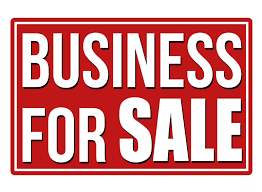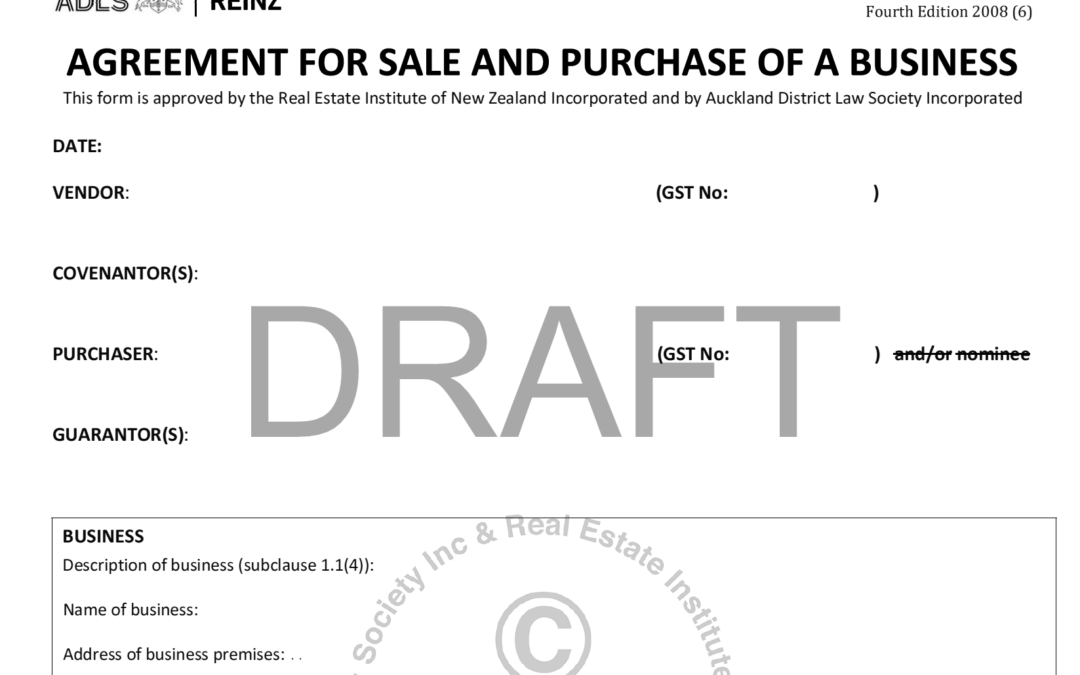
Selling a Business Guide – 4 Recommended Guidelines
How to sell, why to sell, to who and for what price are key factors when selling a business.
1.0 BUSINESS SALE PRICE
The price a business sells for is the price that the Seller and Buyer agree on.
Otherwise, a sale price is an approximation based on the ROI (Return on Investment) profitability that comparable businesses are sold for. For example, a business sold for $2 Million dollars on expected annual profits of $650,000 is sold on an annual 32.5% ROI basis.
In New Zealand business brokers licensing rules require them to:
- Provide the Seller they act for with a realistic current Market Sale Price Appraisal, with a description of the method of appraising.
- Advertise an asking price that clearly reflects the Seller’s expectations
This is to ensure that there is clear communication between all parties (Seller, Broker, and Buyer) about the expected sale price. The appraisal is based on the ROI (Return on Investment) from owning the business, based on the profits expected to be earned by the Tangible and Intangible Assets excluding Stock. Business sale prices are normally advertised as an asking price + stock.
Most SMB (Small and Medium sized Businesses) are Asset sales.
On a Business Sale Agreement, the total sale price is broken down into 3 parts – Tangible, Assets, Stock in Trade, and Intangible Assets.
- Tangible assets are the physical assets needed to operate the business e.g. premises, premises fittings, equipment (including machines and vehicles).
- Stock in Trade are the products (including the raw materials for making the products) sold by the business.
- Intangible assets represent the balance of the total sale price other than Tangible assets + Stock. That includes intellectual property, contractual rights, and goodwill. It is the agreed sale price difference (from Tangibles and Stock) for the expected prospects (opportunities and threats/risk) of the business to maintain, exceed, or reduce the ROI profits of the business.
Business can be also be sold (in full or in part) as Shareholder Equity, a share (rather than ownership of specific assets) of ownership of the business ROI.
2.0 HOW TO SELL A BUSINESS

Tell Prospective Buyers what’s for sale at what asking price.
Identify the assets being sold, Tangible, Stock, and Intangibles.
Describe the opportunities and threats in and of the market and the strengths and weaknesses of the business assets regarding their effect on ROI.
Describe the costs and benefits of owning the business, including why the business will continue to sell and profit by how much, the surety of continued ROI and investment payback.
2.1 SELLING A BUSINESS BEST PRACTICES
Sooner or later the points numbered below are included in what a business buyer needs to know about a business sale to make a buying decision & most (if not all) of the points are needed by a business broker to appraise a market sale price and write an information memorandum or business profile that describes the business ROI expectations.
Information should be confidentiality provided to prospective buyers in stages.
Initially, an investment memorandum (business profile for smaller ‘selling a job’ businesses) should be provided, They should detail and/or summarize the information listed below.
More detailed information (e.g. financial statements) should only be provided after serious interest is indicated from someone the Seller will sell to, some information only provided at DUE DILIGENCE stage when a conditional offer to buy the business has been agreed to.
- Indicate a sellable or near sellable asking price, a price that the Seller will agree to sell the business for.
2. Provide consistent facts about what’s for sale.
- A list of assets with asking prices
- A summary of historical financials, including working capital needed (for receivables minus creditors, etc.), financial profit performance – matching what is shown on tax return Financial Statements, GST returns and other reporting
- A copy of Financial Reports e.g. Statements and GST returns
- A copy of contracts needed for continuing the current going concern business, including leases and employment agreements
3. Provide a strategic outline of the prospects for future ROI.
- Provide a reason for selling
- Describe the ROI situation – with some form of SWOT Analysis of the market (Opportunities and Threats) and business assets (Strengths and Weaknesses) to earn future ROI.
4. Continue operating the business as usual, in good repair, for continued performance and best future prosperity.
5. Propose an appropriate handover and training period.
6. Propose an appropriate non-compete period.
2.2 APPOINT A BUSINESS BROKER TO SELL A BUSINESS
Selling a business is a specialist area so it’s worth getting expert help.
A good business broker should understand how to describe the strategic business situation, the strengths and weaknesses of business assets to prosper in the market’s opportunities and threats, explain the ROI that a buyer needs to know to make a buying decision, and be licensed to draft an AGREEMENT FOR SALE AND PURCHASE OF A BUSINESS.
Experts specializing only in business strategy and management, or finance and accounting, or law are worth getting help from too.
Help from a lawyer licensed to practice law and give legal advice should be sought before signing a sale agreement. A business broker’s license does not license them to give ‘legal advice’.
It’s worth getting a business broker to appraise a current market sale price.
It’s worth getting a business broker to prepare an investment memorandum (business profile for small businesses) with details about your business, that outline what buyers need to know to make their buying decision. The information should be big on facts and forecast opportunities and risks for growing the business.
aAgents.Biz Business Brokers can help business by Appraising Business Value, Valuing a Business, writing Information Memorandums, and Business Profiles, acting as a Business Seller’s Agent.
3.0 WHO TO SELL A BUSINESS TO
Buyers may be:
- employees — this is known as a management buyout
- competitors
- suppliers or customers
- entrepreneurs
- investment groups.
Finding and negotiating with potential buyers is time-consuming and specialist work, so think about hiring a business broker to do it for you. A broker will know which type of buyer will be interested in your business and how to approach them.
4.0 COMPLETING A BUSINESS SALE TRANSACTION
A licensed Business Broker is licensed to draft the AGREEMENT FOR SALE AND PURCHASE OF A BUSINESS (ASPB).
Their licensing rules require them to recommend and give parties a reasonable opportunity to take legal and technical advice before signing an ASPB.

